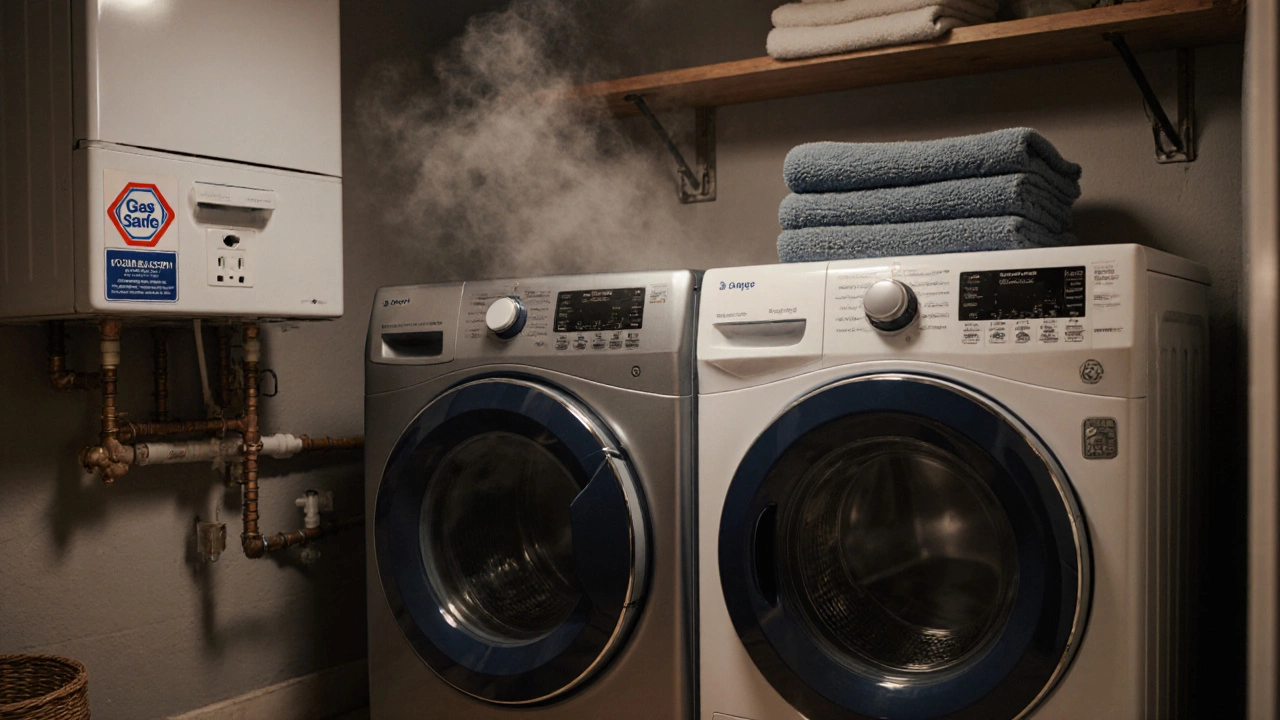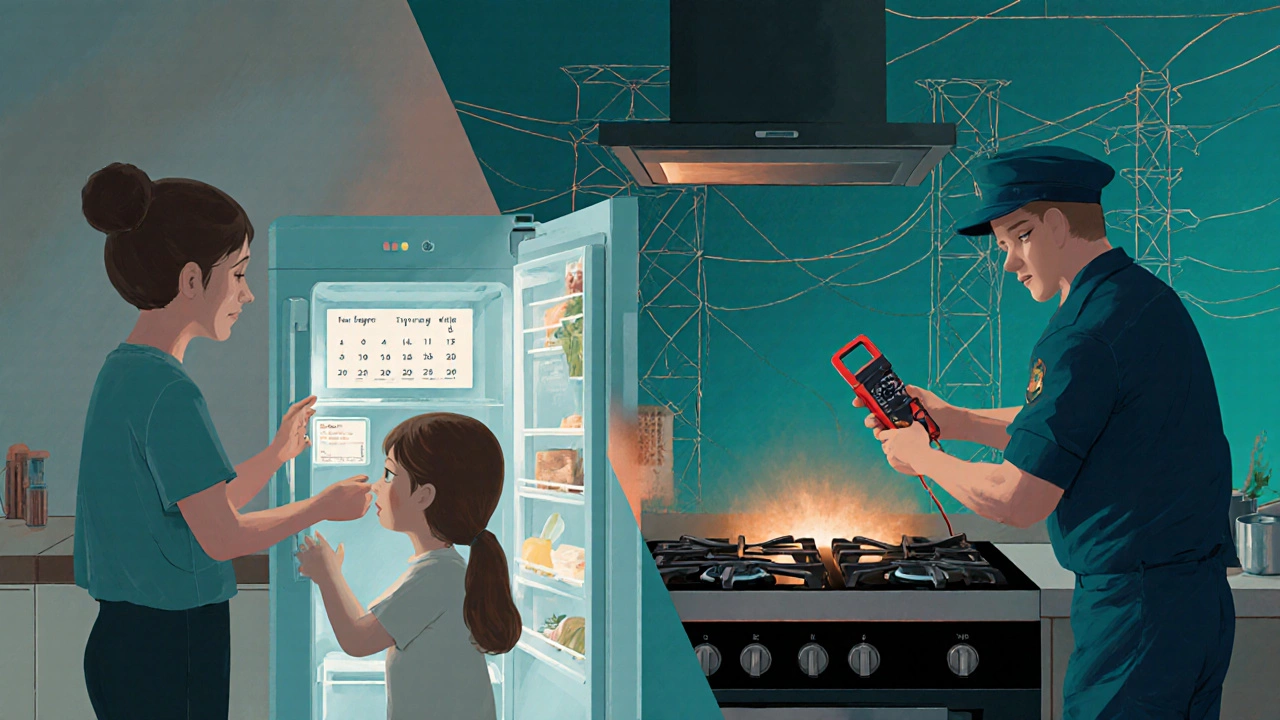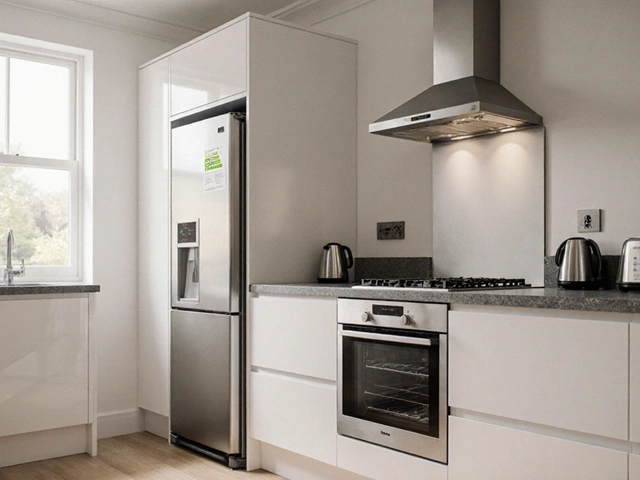Appliance Classifier Tool
Is This an Appliance?
Answer 3 key questions to determine if your device qualifies as an appliance according to UK standards.
Answer the questions above to see results
Ever wonder why your fridge counts as an appliance but your toaster doesn’t? Or why some people call a coffee maker an appliance while others don’t? It’s not just semantics-it affects repairs, warranties, and even how you install things in your kitchen. If you’ve ever called a technician and been told, ‘That’s not a major appliance,’ you’ve felt the confusion. So what exactly counts as an appliance? Let’s cut through the noise.
What Makes Something an Appliance?
An appliance is any device that performs a specific household function using electricity or gas. It’s not just something that plugs in-it has to be designed for regular, repeated use in the home. Think of it like this: if it’s built into your kitchen, basement, or laundry room, and you rely on it daily, it’s likely an appliance.
The key difference between an appliance and a simple electronic gadget? Appliances are built for durability and heavy use. A smartphone might be electric, but it’s not an appliance. A washing machine? Absolutely. It’s designed to run dozens of cycles a month, handle water, heat, and spinning loads-all without breaking down.
Appliances are also regulated. In the UK, they must meet safety standards like BS EN 60335 for household electrical appliances. That’s why you see the CE mark on them. You won’t find that on a hairdryer you bought at a market stall, even if it plugs into the wall.
Major Appliances vs. Small Appliances
Not all appliances are treated the same. The industry splits them into two clear groups: major and small.
Major appliances-also called white goods-are large, fixed, or semi-fixed machines that handle core household tasks. These include:
- Refrigerators and freezers
- Washing machines and tumble dryers
- Dishwashers
- Ovens, hobs, and cookers
- Water heaters and boilers
- Extractor fans (yes, these count too)
These are often built into your home’s structure. You don’t just move them around. If one breaks, you need a professional technician. They use high-voltage power, plumbing, or gas lines. That’s why repair services like appliance service exist-these aren’t DIY fixes.
Small appliances are portable, plug-and-play devices. They’re cheaper, easier to replace, and usually don’t need professional installation. Examples:
- Toasters and kettles
- Blenders and food processors
- Microwaves
- Coffee makers
- Vacuum cleaners
- Electric kettles
Even though they’re small, they’re still appliances. A microwave is technically a small appliance, but because it’s often built into cabinetry, some people lump it in with major ones. The line can blur-but functionally, if it plugs in and you use it daily, it’s an appliance.
What Doesn’t Count as an Appliance?
Not everything that uses power is an appliance. Here’s what’s left out:
- Light fixtures-Even if they’re smart bulbs, they’re part of your home’s electrical system, not appliances.
- Televisions and sound systems-These are electronics, not household function machines.
- Computers and laptops-Used for work or entertainment, not cleaning, cooking, or climate control.
- Power tools-Drills, sanders, saws. These are for workshops, not daily home use.
- Electric blankets and heaters-While they heat, they’re classified as personal comfort devices, not appliances.
Why does this matter? Because warranty terms, insurance claims, and repair services treat them differently. If your TV dies, you might replace it. If your boiler fails, you call a certified engineer. The category determines the response.

Why the Classification Matters for Repairs
When you call an appliance service provider, they don’t fix everything that plugs in. They focus on the core household machines that keep your home running. A fridge compressor repair? That’s their job. A broken phone charger? Not even close.
Major appliances often require Gas Safe or OFTEC certification for gas-powered units. In the UK, only qualified engineers can legally work on boilers or gas hobs. That’s why you can’t just YouTube a fix and call it done.
Small appliances? You might be able to fix them yourself-or just buy a new one. A £30 toaster isn’t worth a £100 repair. But a £1,200 washing machine? That’s a different story. The cost-benefit analysis changes based on whether it’s classified as major or small.
Insurance policies also reflect this. Many home insurance plans cover damage to major appliances from power surges or mechanical failure. They rarely cover small appliances unless you’ve added optional coverage.
How Appliances Fit Into Modern Homes
Modern homes in the UK are built around appliances. A kitchen without a fridge, hob, and dishwasher is rare. A laundry room without a washer and dryer? Unthinkable. These aren’t luxuries anymore-they’re essentials.
Energy efficiency ratings now play a big role. Since 2021, all new major appliances sold in the UK must have an updated A-G energy label (with A being the most efficient). This affects both your bills and resale value. A fridge with an F rating might be cheaper upfront, but it’ll cost you £150+ extra per year in electricity.
Smart appliances are rising fast. Wi-Fi-enabled fridges that track expiry dates, washing machines you start from your phone, ovens that preheat remotely-these are now common. But they’re still appliances. The tech just adds convenience. The core function hasn’t changed.

Real-World Examples from UK Homes
Take Bristol, where I live. In a typical 3-bedroom house, you’ll find:
- One fridge-freezer (major)
- One washing machine and tumble dryer (major)
- One electric oven and hob (major)
- One dishwasher (major)
- One kettle and toaster (small)
- One microwave (small, but sometimes built-in)
- One extractor fan (major, because it’s ducted to the outside)
That’s eight appliances. Seven of them are either gas or electrically heavy-duty. The kettle and toaster? They’re small, but they still count.
Now imagine your cousin in a flat in London. They might only have a mini-fridge, a microwave, and a kettle. That’s still three appliances. Size doesn’t matter-function does.
What to Do When You’re Not Sure
Still unsure if something qualifies? Ask yourself:
- Is it used for a core household task (cleaning, cooking, cooling, heating)?
- Does it plug into a standard socket or connect to gas/water?
- Is it designed for daily, repeated use?
- Would a repair technician reasonably work on it?
If you answered yes to all four, it’s an appliance. If it’s just a gadget you use once a week, it’s probably not.
When in doubt, check the manual. If it mentions compliance with BS EN 60335 or has a CE mark, it’s officially an appliance. If it doesn’t, it’s just an electronic device.
Final Takeaway
Appliances are the silent backbone of your home. They don’t make headlines, but when one breaks, your whole routine collapses. Knowing what counts as an appliance helps you plan repairs, understand warranties, and avoid wasting money on fixes that aren’t worth it.
Don’t get hung up on labels like ‘major’ or ‘small.’ Focus on function. If it keeps your home running, it’s an appliance-and it deserves proper care.
Is a coffee maker considered an appliance?
Yes, a coffee maker is a small appliance. It’s an electric device designed for daily household use, specifically for preparing food or drink. Even though it’s portable and inexpensive, it meets the definition: it uses electricity, performs a specific function, and is built for repeated use.
Is a TV an appliance?
No, a TV is not considered an appliance. It’s an electronic device used for entertainment, not for household tasks like cooking, cleaning, or climate control. While it plugs in, it doesn’t fall under the category of appliances used in home maintenance or utility functions.
Are built-in microwaves major appliances?
Built-in microwaves are often grouped with major appliances because they’re permanently installed into cabinetry and integrated into the kitchen layout. While technically small appliances by function, their installation and repair requirements make them behave like major ones in service contexts.
Do all appliances need professional repair?
Not all, but many do. Major appliances like boilers, ovens, and washing machines require certified technicians due to electrical, gas, or plumbing risks. Small appliances like toasters or blenders can often be fixed at home or replaced. Always check the manufacturer’s guidelines and safety warnings before attempting repairs.
Why does the UK classify appliances differently than the US?
The UK doesn’t classify them differently in core definition-both countries agree on what an appliance is. But the UK has stricter safety regulations (like Gas Safe registration) and energy labeling rules. The real difference is in repair culture: UK homeowners are more likely to call professionals for gas or electrical appliances due to legal requirements, while in the US, DIY is more common.
Can a smart fridge be repaired like a regular one?
Yes, but with extra steps. Smart fridges still have compressors, cooling systems, and insulation-the same core parts as traditional ones. The difference is the digital interface. If the cooling fails, it’s a standard appliance repair. If the touchscreen or Wi-Fi fails, it might need a software update or sensor replacement. Most appliance technicians are trained to handle both.



